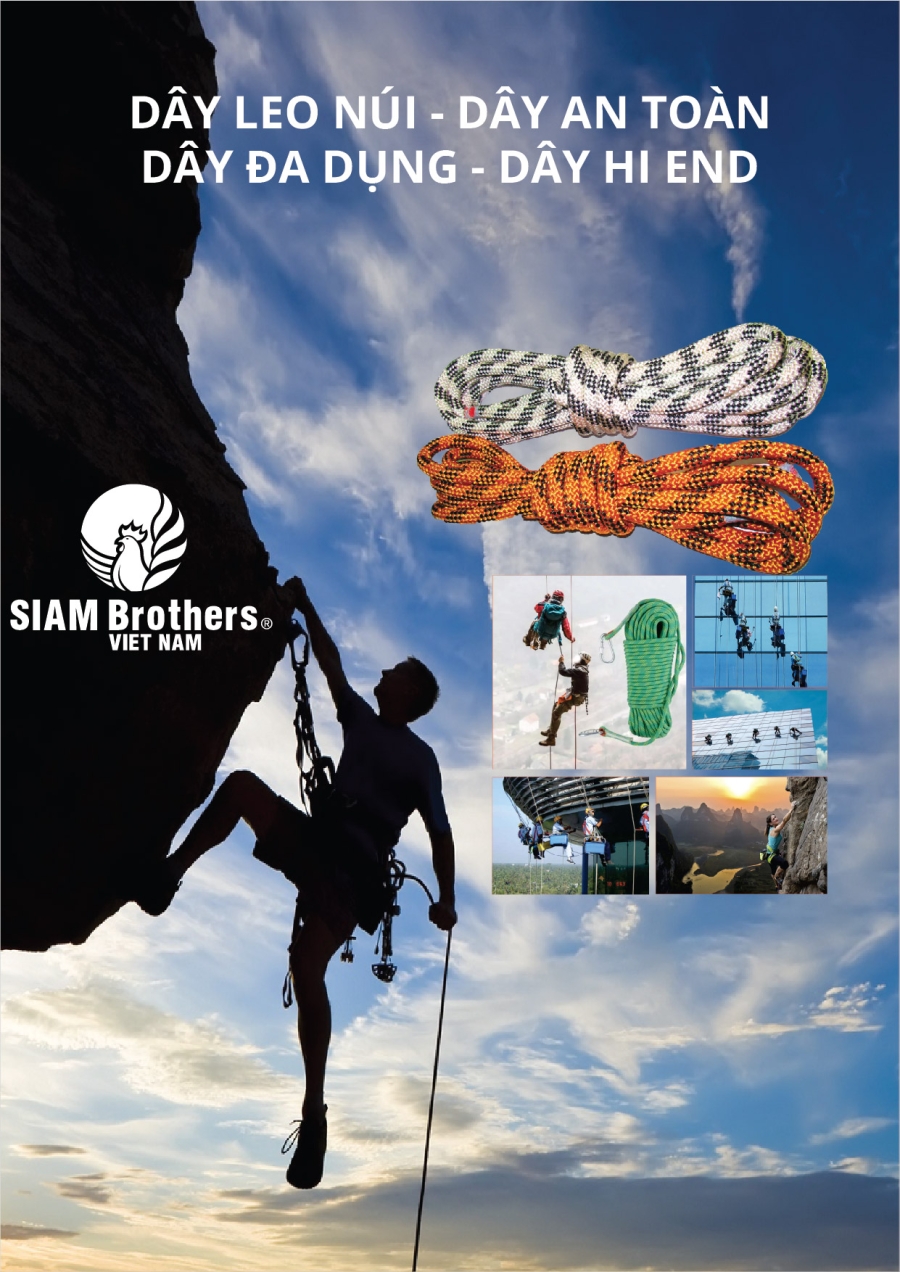Proper maintainance of climbing ropes is crucial for ensuring their durability and safety for users. Correctly storing climbing ropes can also help save costs by extending the lifespan of the product.
1. Instructions for maintaining climbing ropes
Check your climbing rope regularly
Regularly checking your climbing rope is essential so that you can identify any issues with the rope before use. Before climbing, you should:
Repair minor damages on the rope
If a small section of the rope is damaged near the end, you can cut off the damaged portion and continue using the remainder of the rope. Here's how:
Store your climbing rope
When you're not using your climbing rope, proper storage is essential. One of the most common and straightforward ways to store a climbing rope is to keep it in a rope bag. The bag serves two purposes: it provides a convenient way to store the rope when not in use, and it helps keep the rope clean when climbing.
How to coil the rope and store it in a bag:
When you're ready to climb, all you need to do is grab the rope bag and take it with you. While climbing, try to keep the unused portion of the rope on the tarp and away from dirt and debris.

Figure 1: Storing climbing ropes
Cleaning climbing ropes
No matter how hard you try to keep the cord clean, it will still get dirty. When you notice that your hands or protective gloves are sticky black after handling the rope, you should clean the cord, as this will help the cord work properly and increase the life of the rope. Here's how to clean climbing ropes:
When should the cord be changed?
Your climbing rope won't last forever. Here is an estimate of how long it will take you to replace the wire:
• If you fall from a great height or the rope is severely damaged: get rid of it immediately.
• Regular use (weekly): 1 year.
• Regular use (several times/month): 1-3 years.
• Occasional use (1 time/month): 4-5 years.
• Rarely used (1 - 2 times/year): 7 years.
• Never used: 10 years.
Keeping a record of the date of purchase, usage, and the number and severity of falls in a notebook will help you determine exactly when you need to ditch your climbing rope.
Do's and Don'ts for climbing ropes
To get the most out of your climbing rope, read and keep the following in mind:
Things to do
Remove the new coil: Unless the cord is marked ready to use, you should remove it carefully. Thread your forearms through the coil, have a friend pull on one end as if pulling a pulley, and let the ropes stack naturally. This will keep the cord from tangling and knotting.
Untwist the rope: If your vines get twisted while climbing, let the ropes hang freely and untwist them by hand.
Use a rope bag: Between hikes, put the rope in a climbing rope bag for storage.
Use a tarpaulin: On climbing days, use a tarpaulin to keep the rope clean. Most lanyard bags have a tarpaulin wrapped on the inside.
Logbook: Record your rope usage in a notebook, especially when you fall.
Things not to do
Rubbing the 2 wires together: this will burn the wire and the sheath. You should especially avoid threading two ropes through the same top hanger, and never pull the safety harness directly against the lanyard.
Step on the rope: this will stain and damage the rope.
Nail holders and ice ax: Avoid damaging or breaking the cord.
Poor grounding or support: Too fast or jerky grounding, anchoring can damage the rope due to too much friction on the sheath, as well as making it harder to control the rope.

Figure 2: Siam Brothers Vietnam climbing rope products
2. Instructions for preserving sea-going ropes
Proper care of a marine rope is very important to ensure its safety and durability in saltwater environments.
Clean the rope after use
Dry the rope completely
Store rope in a cool and dry place
Avoid sunlight and high temperature
Check the rope regularly
The rope should be checked regularly to make sure it is not torn or damaged. If any problems are found, discontinue use and replace with a new cord.
3. Instructions for preserving Siam Brothers Vietnam ropes
The rope products of Siam Brothers Vietnam include: Chicken Rope, Thai Chicken Rope, Thai Pork Rope, Thai Rope, Thai Boat Lanyard, Offshore fishing net rope, nearshore fishing line, golden chicken wire, walrus rope (seahorse), ... On each stamp of Siam Brothers Vietnam packed in coils, there are instructions on how to preserve the rope, customers can refer to it for reference: